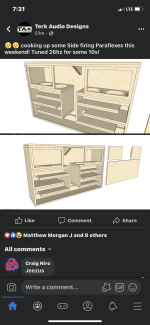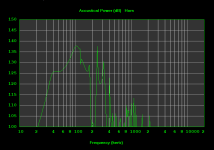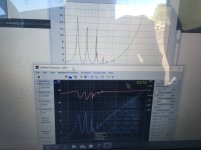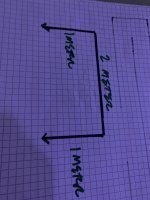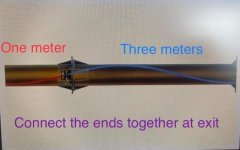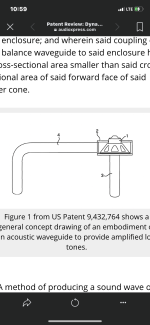so why are you wondering why this works?
if you consider that it unusable why waste anyone's time
if you consider that it unusable why waste anyone's time
Because qw resonators are incredibly intersting when lined up to share(1/4 parallel to 3/4) or cancel(driver @ 1/3,2/3) a resonance ?
I don’t understand what this does ? it leaves me with an issue(hiccup) in electrical impedance as well as cancels freq response there
something is very hard on the drivers too? Random loadibg and resonances on either side of the cone Constantly ?
I dunno? Isnt this your design ‘turk 182?’
I don’t understand what this does ? it leaves me with an issue(hiccup) in electrical impedance as well as cancels freq response there
something is very hard on the drivers too? Random loadibg and resonances on either side of the cone Constantly ?
I dunno? Isnt this your design ‘turk 182?’
Attachments
Last edited:
3:1 verses 4:1 path lengths. opens up a big notch? and lastly is without the added resonator in parallel.. (is it helpingaything, or just addig HF noise?) bose wave cannon(3:1) doesnt leave cancelation, etc or need to be stuffed with damping to try and dig out that notch?



I guess it’s like offset driver entry point in a TL at 1/5 or so? What’s the point if it doesn’t actually help with the 3/4 harmonic and 4/4 cancelation (~1/3) .
or create much ‘gain’ in the bandwidth to justify the ‘wasted space’ that coulda been deeper bass as a ‘normal tapped pipe/TL‘
I dunno? Do parallel Helmholtz resonators run into similar issues or is this the issue with long pipes and multiple resonances (1,3,5,7…) /cancellations (4,8…)?
Last edited:
If I understood the original Q, then the late DJK noted that turning the ends down completed a square wave antenna, but AFAIK can only be simmed in either AkAbak or an antenna simulator.
- Home
- Loudspeakers
- Subwoofers
- How does this ‘work’ ?
